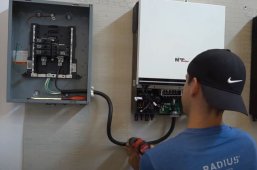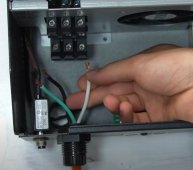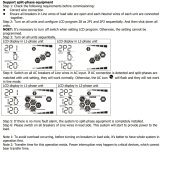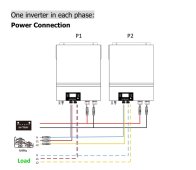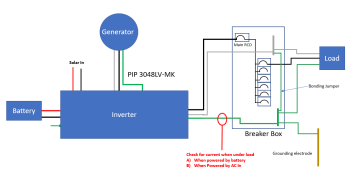First, this is my understanding of the MPP units:
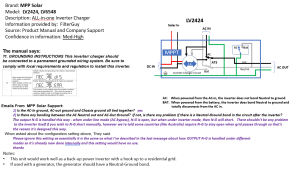
The PIP 3048LV-MK may be different but I seriously doubt it.
Assuming the PIP 3048LV-MK is the same, this is what it will look like in your set up.

Notice that when the inverter is on battery, the bonding relay creates an N-G bond. Since there should always be one, but only one N-G bond, the breaker box should keep the neutral and ground separate.
However, when the inverter is on AC-input (Pass-through) the Bonding relay removes the N-G bond. It is expecting the input to provide the bond.
Most small gasoline generators in the US do not provide an N-G bond so you have a few choices.
1) On some generators it is possible to open them up and connect the neutral and ground.
2) On generators that have multiple plugs on them, some people will plug this into an unused plug to create an N-G bond:
This works well, but you have to remember to use it.
3) You can create a bond by putting a jumper between the AC input Neutral and Ground terminals. (THis can be a PITA because the terminals are typically not large enough for two full size wires.
4) You can make a 'pigtale' with an N-G bond. (This is essentially a short extension cord that has an N-G bond in one of the connectors. )
5) You can build an NG-bond into the extension cord between the generator and inverter.... but make sure not to use that cord elsewhere.
Note: If you are not familiar with the purpose and importance of the N-G bond, you may want to review these grounding tutorials:
To get the paper, click on the orange button at the top of the screen. The subject of grounding is a complex, multifaceted subject, that is often treated as an after-thought but needs to be considered from the beginning of the design and build...

diysolarforum.com



